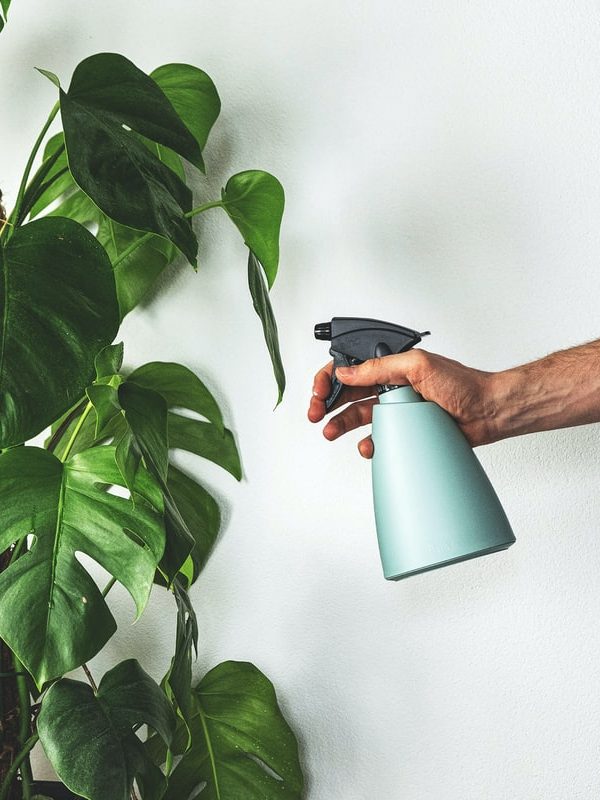Tomato hornworms are scientifically known as Manduca quinquemaculata; they belong to the Sphingidae family. You will need to check your tomato garden carefully to identify them. They have fresh green colors like tomato leaves. But if you check carefully, you will see their green body with white v-shaped points along their sides.
They hatch, begin to feed on the garden tomatoes, and are full-grown adults by around three to four weeks. You should be aware that mature tomato hornworms drop off plants and burrow into the soil to transform into pupae.

The two main types are tobacco hornworms and tomato hornworms. Tomato hornworms damage the tomato toward the top of the plant.
They consume the leaves of the tomato plant and can leave the stem bare with no leaves at all.
They have a unique damaging mechanism since they damage the exterior of the tomatoes and leave large open scars on the tomatoes. They can feed on both ripe and unripe tomatoes.
Methods on how to Control Tomato Hornworms
There are several ways in which you can control these pests. Here are some methods you could try:
- Attracting Beneficial Bugs
These beneficial bugs include ladybugs, lacewings, and wasps. You can attract these bugs by growing pollen-laden flowers that they feed on the nectar and reproduce. Another great way is by growing herbs in your garden that attract ladybugs greatly.
The wasps will lay eggs and pupate on hornworms, making them the hosts. As the wasps emerge from their cocoons, they kill their hosts and leave looking for other hornworms to feed on.
Pollen-laden plants include Mexican marigold, purple poppy mallow, and fern-leaf yellow. If you do not have these in your garden, it is time to grow them to protect your tomatoes.
- Hand-Picking
Considering that the tomato hornworms are almost the size of a finger, this makes it simpler to pick them from your tomato plants.
It is also challenging since they have a camouflaged color with the green coloring matter of the tomato plant leaves. This method helps prevent the insect larvae from defoliating your plant’s growth.
- Using Soap Water
This is one of the simplest methods because you only need soap and water. You are then supposed to spray the mixture on the plant foliage before adding cayenne pepper.
This will help get rid of the bugs. If you don’t want to use soap or water, you could use Bacillus thuringiensis, which is a natural insecticide.
- Using Chemical Insecticides
These insecticides kill the larvae instantly on contact. You should use these chemicals with caution since some are harmful to one’s health. If you have livestock around, consider using mild insecticides if need be.
These insecticides could also kill the beneficial bugs that would help control these tomato hornworms and are also toxic to mammals such as cows, goats, and sheep.
- Cultivating
Considering that the life cycle of tomato hornworms is 30 to 50 days, mature larvae drop to the ground, burrowing to a depth of around half an inch, and then starting the pupae stage.
Tilling would be a great idea to get rid of these tomato hornworms. The disadvantage that comes with this method is that it does not prevent larvae damage.
Signs That Your Tomatoes Have Been Attacked
You can identify these tomato hornworms’ damages on tomatoes when you look closely at the top of your tomato leaves for dark green or black droppings from these pests.
If you look at the underside of the leaf, you will most likely find a tomato hornworm.
You could also observe the stems for missing leaves or wilted leaves. Chewed tomato plant leaves could also be a sign of the presence of these tomato hornworms.
Tomato plants that have devoured flowers could also be a sign of a tomato hornworm attack.

Preventing Hornworms
There are various methods of preventing or keeping these pests away from your tomato plants. Some of these methods include:

- Keeping wasps around; they lay their eggs on these tomato hornworms’ bodies and when they hatch they feed on the pests.
- Growing pollen-laden flowers that will attract useful bugs to the garden. These bugs include ladybugs, assassin bugs, minute pirate bugs, soldier beetles, and robber flies. They mostly feed on these pests, which is an advantage to you as a farmer.
- Try out companion plants. For example, you could try growing your tomatoes with basil or marigolds.
- Tilling soil at the beginning of each gardening season ensures you have destroyed the tomato hornworm larvae.
Maintain the Health of Your Tomatoes!
You should know the difference between a tobacco hornworm and a tomato hornworm. Tomato hornworms have white v-shaped marks while tobacco hornworms have white parallel stripes. Tobacco hornworms have a red horn on their tail while tomato hornworms have a black horn.
When farming, you should be prepared to deal with such pests and find ways to control them for a long time. If you don’t want to use chemicals, you could try the other methods listed in this article.
You should be aware that using too many chemicals on your tomatoes will affect the quality and affect the consumers’ health in one way or another. You should create a plan on how to grow and maintain your tomatoes.
Picture courtesy: Pixabay.com




